Family Thomisidae (Crab Spiders)
Thomisidae (crab spiders) are usually brightly coloured with colourful patterns. As with crabs, the first two legs are longer than the rest of the legs, hence the common name - crab spiders. Similar to crabs they are able to move forwards, backwards as well as sideways. The Thomisidae is a large family of spiders with 160 genera and about 2000 known species. In Africa they are represented by 69 genera and about 360 species. Most thomisids species have a very wide distribution throughout the region as they are easily distributed by wind.
Thomisids are commonly found on plants, and only a few genera are ground dwellers. They have a body size of between 3-23 mm. Their body colour is variable ranging from brightly coloured (pink, green, yellow, red) to dark brown or grey with a mottled appearance. Their abdomens are variable in shape being triangular, round to ovoid to elongate, sometimes extending tail-like past the spinnerets. They have eight eyes arranged in two rows (4:4) with the lateral eyes usually on distinct tubercles. Their legs are very distinct with the front legs usually longer than the hind legs. The front legs frequently have a series of strong spines on the tibiae and metatarsi to assist in catching prey. The brush-like setae on the tip of each leg facilitate their movements on plants.
Thomisids inhabit grass, shrubs, flowers and trees. Thomisids have lost their agility, and have become semi-sedentary and excel as ambushers. With their cryptic colouration most species await their prey, usually on plants. They are mainly active during the day and their gait is sideways. With their robust front legs they are able to attack prey much larger than themselves. They can see movement 20 cm away. Prey is seized, frequently from the air when 0.5-1 cm away. Although they have weak chelicerae, they secrete extremely potent venom, which enables them to attack insects 2-3 times their size.
They have no cheliceral teeth and their prey is consequently not mashed but sucked dry. The life-like carcass is held in a natural position while it is being fed upon and thus offers some protection to the spider, while sitting on the plant. They are also commonly found on crops and prey on a variety of small invertebrates. They play an important role in the natural control of pest species such as aphids, red spider mites, thrips and other insects. Little is know about their medical importance.
In the Thomisidae sexual dimorphism occurs in many of the species. The males are much smaller in size than the females but they not only differ in size but also in shape and colour. Mating in the thomisids usually takes place in spring and summer after the males and females have moulted for the last time. In the flower crab spiders of the genus Thomisus , the female is frequently found on flowers carrying the small male on her abdomen. The male is carried around by the immature female, until she sheds her skin to emerge as an adult.
In the ground crab spiders (
Xysticus) the female is bound down with silk threads before mating takes place. Eggs are usually laid during summer. The thomisid egg sacs are usually lenticular in form and consist of two equal halves united at the border. Many spiders attach their egg cocoons to plants and leave them there. In others, the female sits close to the egg-sac and watches over it. The female frequently builds a brood chamber between vegetation binding leaves together to provide some shelter.
Most thomisids live only for one year. A spider female that hatches in autumn will hibernate as an immature, mature in spring, lay her eggs during summer only to die in late summer. Apart from normal death owing to age, there are various other factors that can influence the longevity of a spider such as starvation, shortage of water, cannibalism, landing in unfavourable habitat during ballooning, adverse climatic conditions, and predation by other animals. Thomisids are among the favourite prey of insectivorous birds and other invertebrates. They are also attacked by fungi and parasitic worms. Of the insects the pompilid wasps, which hunt spiders are especially dangerous.
Thomisids display an interesting range of adaptations to their environment. They are found in a variety of habitats and are masters of camouflage. Some species mimic other animals or objects. They assume the form of inanimate objects such as bird droppings, tree bark and leaves to protect themselves. In Phrynarachne - the bird dropping thomisid, the spider spins a small irregular silk disk on a leaf. Their bodies are covered with bumps and tubercles and when resting in the middle of this disk they look like bird-dropping. The following are a few of the more common thomisid spiders.
Ground-dwelling thomisids: ground-dwelling thomisids vary from grey, brown or black, depending on their surroundings. Only a few genera such as
Xysticus,
Ozyptila,
Stiphropus and
Stiphropella are known to live on the ground. They are free-living ground spiders. They are diurnal and usually found under stones or dead tree logs. They prey on various ground living fauna such as ants and termites.
Plant-dwelling thomisids: Plant-living spiders have characteristic adaptations that allow a very efficient life on plants. Some species are nimble free-livers, while others have lost their ability to move about swiftly, spending their entire lives on one part of a plant. They have good eye-sight and well-developed tactile sense organs. Plant dwellers can be classified according to the type of plant or part of the plant that they usually inhabit, for example grass, bark, foliage, flowers and seed.
Grass dwellers: A large number of species occur on grass. Most species are ambushers that wait for prey to venture close enough. Those that live exclusively on grass blades can easily be recognized by their elongate bodies and long thin legs. They vary in colour from fawn to grey and many species have stripes across the length of their bodies, which closely resemble the veins in a blade of grass. They often have cryptic colouration and the fact that, when resting, the legs are held forward and parallel with the body, makes most of them difficult to detect.
Monaeses (tailed crab spider) and
Runcinia (grass crab spider) with their elongated bodies are common grass blade -dwellers. Members of the genus
Heriaeus (spiky grass crab spider) are covered with long setae giving them a spiny appearance. They are associated with grass seeds. Twisted grass blades and grass seeds are bunched together by the grass dwellers with silk threads and used as retreats or to deposit the egg sacs.
Bark dwellers: Some species are found mainly on bark. They vary in colour from grey-white to dark brown. Most have a mottled appearance and closely resemble pieces of bark. Their bodies have large, knobby and spiny protuberances, which resemble the growths and thorns commonly found on trees. Common bark dwellers are members of the genera
Tmarus (bark crab spider) and
Pherecydes (stalky-eye crab spider).
Seed dwellers: The seed dwellers are usually small and have rounded, compact bodies, which closely resemble seeds. Their colour varies from red to green to white. Well-known seed dwellers are members of the subfamily Bominae (genera
Thomisop,
Avelis and
Parabomis).
Foliage dwellers: Foliage dwellers vary in colour from fawn to brown or bright green. Well-known foliage dwellers are members of the genera
Misumenops (red back crab spider),
Synema (African mask crab spider),
Oxytate (green crab spider) to name but a few. The egg-sacs are deposited in twisted leaves or may be directly attached to a leaf. Most of these genera are important in agro-ecosystems. Members of
Misumenops are very commonly found on crops like cotton and tomatoes while
Oxytate is a dominant genus in orchards.
Flower dwellers: The best-known flower dwellers are members of the genus
Thomisus (flower crab spider). They are brightly coloured (white yellow, pink or pale green or white). Some species are able to change colour. The ability of some
Thomisus species to change colour to conform to the background of their habitat has intrigued naturalist for nearly 100 years. The adult females have the ability to change colour reversibly. The colour ranges from white to yellow to pink.
Crab spiders are common and occur in fairly high numbers on most crops and garden plants. They form part of the natural enemy complex. Their presence should be encouraged and steps taken to protect them from harmful chemicals. Although spiders may be incapable of controlling major pest outbreaks by themselves, their role in a complex predatory community may be important to regulate pest species at low densities early in the season and in between peaks of pest species activity.
Diagnostic characters
Colour: body colour variable, from brightly coloured (pink, green, yellow) to dark brown or grey with a mottled appearance, abdomen frequently decorated with patterns.
Carapace: variable from semicircular, ovoid to elongate, usually with simple erect setae while in some genera strong protuberances or eye tubercle are present.
Eyes: 8 in 2 rows (4:4) with lateral eyes usually on tubercles that varies from rounded to distinct.
Abdomen: variable in shape from round to ovoid to elongate, sometimes extending caudally past the spinnerets.
Legs: laterigrade with legs I and II usually longer than III and IV and the anterior legs frequently with series of strong spines on tibiae and metatarsi.
http://www.arc.agric.za/arc-ppri/Docume ... SPAZOR.pdf
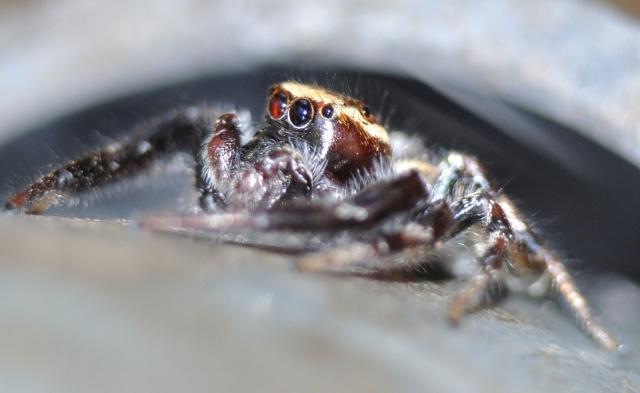
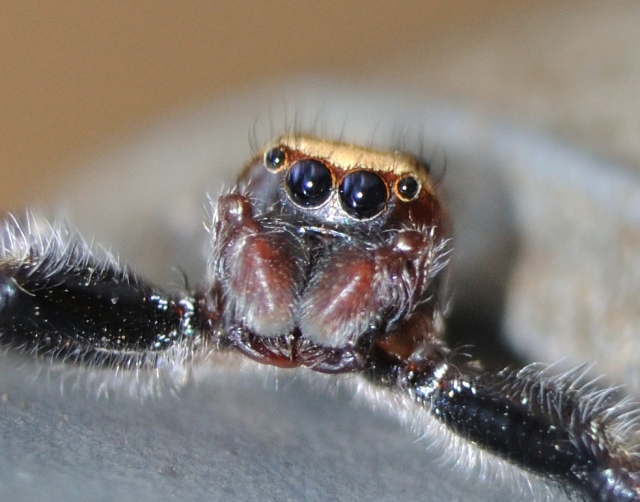


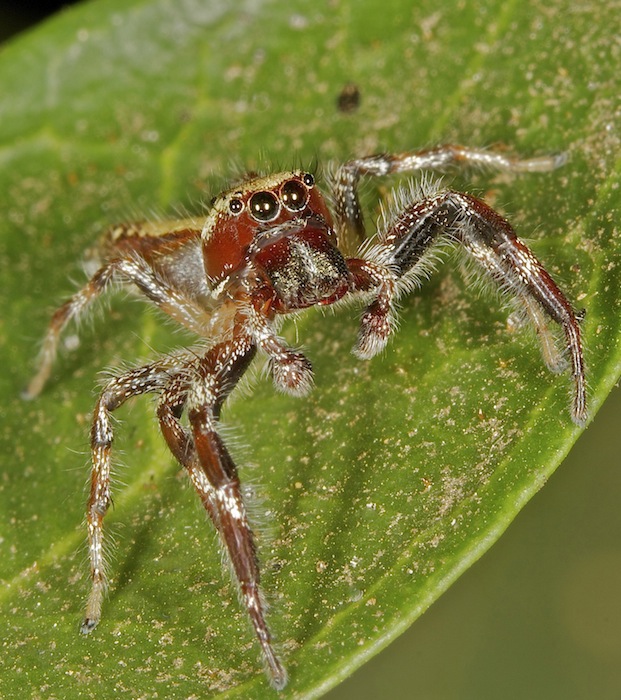
 © BluTuna
© BluTuna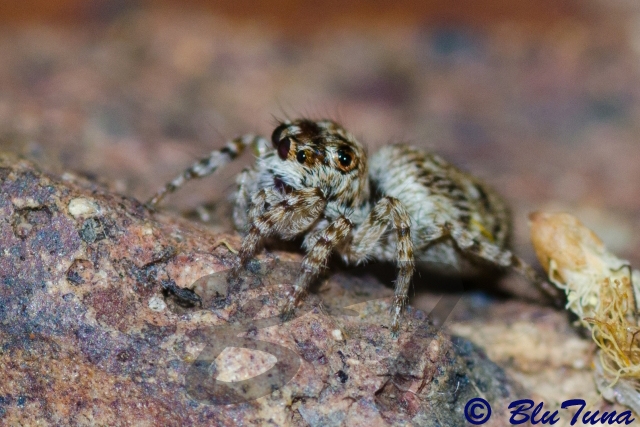 © BluTuna
© BluTuna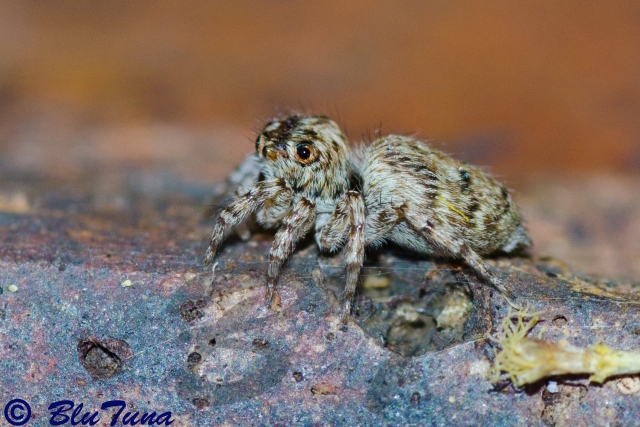 © BluTuna
© BluTuna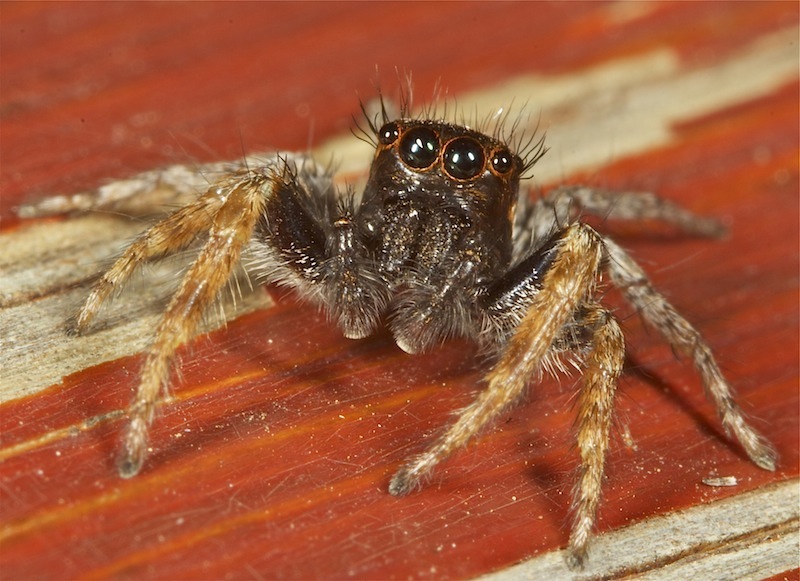
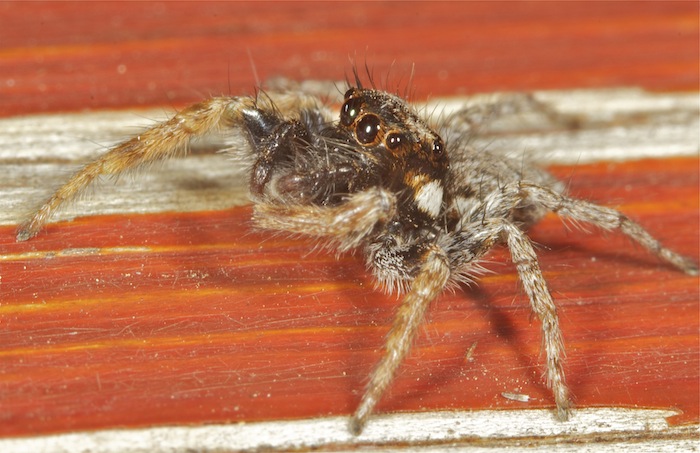
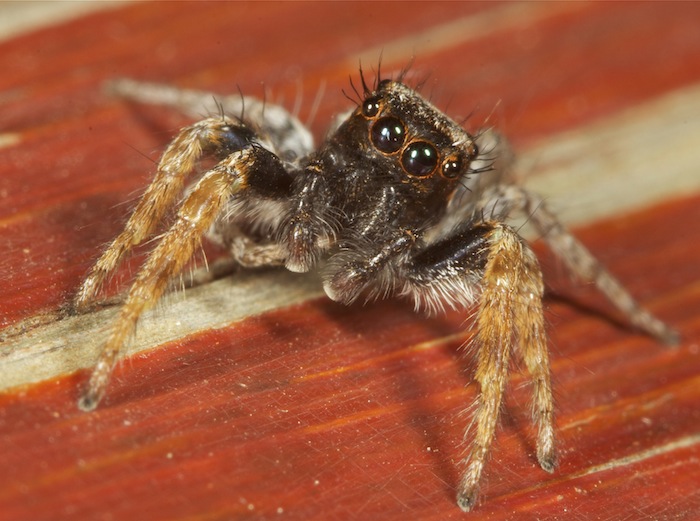
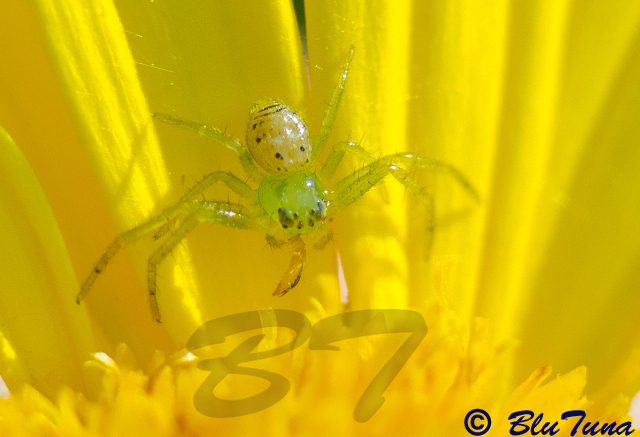 © BluTuna
© BluTuna